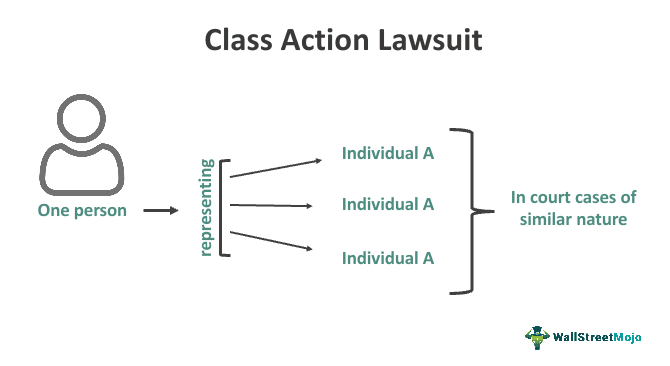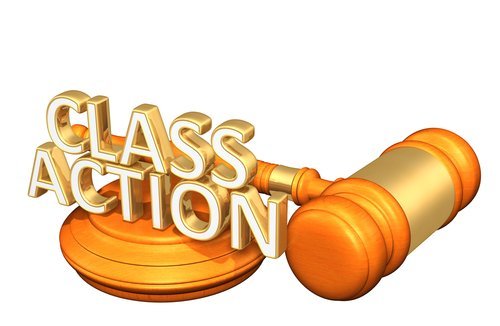Collective Justice: The Power and Process of Class Action Lawsuit Claims
Understanding Class Action Lawsuit: An Overview for Lawyers
Course activity legal actions have become an essential part of the legal landscape, enabling for the consolidation of several cases right into a single activity. By delving into the details of course activity legal actions, this guide equips legal representatives with the expertise and devices required to effectively browse this intricate location of legislation.
The Basics of Course Activity Claims
Class action lawsuits are a legal mechanism utilized to combine similar insurance claims from a team of people into a solitary lawsuit, supplying a reliable and economical strategy to seeking justice and resolution. This sort of claim permits a representative complainant, acting upon part of the entire class, to bring a case against a defendant who has allegedly triggered injury or violated the rights of multiple individuals.
The standard demands for bringing a course activity legal action consist of numerosity, commonality, typicality, and adequacy of depiction. Numerosity describes the truth that the class have to be so large that joinder of all members would be impractical. Commonness implies that there have to prevail inquiries of regulation or fact that are shared by all participants of the course. Typicality needs that the claims of the representative complainant are typical of the cases of the whole class. Adequacy of representation ensures that the depictive complainant will properly represent the interests of the entire class.
Course activity suits can be helpful for both plaintiffs and defendants. For accuseds, it offers the possibility to effectively fix numerous insurance claims in a solitary suit, preventing the requirement to defend against countless individual claims.
Identifying and Assessing Prospective Class Participants
After developing the fundamental needs for a course activity legal action, the next step is to recognize and examine prospective course participants. This procedure includes establishing that might belong to the course and evaluating their claims to figure out if they fulfill the essential requirements.
To identify potential class participants, lawyers commonly conduct comprehensive research study and gather relevant information. This may include examining papers, carrying out meetings, and checking out documents to determine individuals or entities that may have been influenced by the alleged wrongdoing. It is essential to establish a clear and comprehensive listing of prospective class members to make certain that all impacted celebrations are consisted of in the suit.
Once prospective class participants have been identified, the following step is to assess their cases. This includes assessing the merits of each specific insurance claim to determine if they fulfill the legal needs for class certification. Attorneys should thoroughly evaluate the realities, proof, and legal concepts of each prospective course member's insurance claim to ensure that they have a feasible instance.
Evaluating potential course participants also entails establishing whether they meet the class interpretation and have suffered similar harm as an outcome of the defendant's actions. This requires contrasting the realities and conditions of each potential class participant's situation to the allegations and legal concepts placed forth in the claim.
Browsing the Class Accreditation Refine
To efficiently browse the class accreditation procedure, legal representatives must vigilantly stick to the procedural demands stated by the court. Class qualification is a vital action in a class activity lawsuit, as it identifies whether an instance can proceed as a class activity, standing for a team of individuals who have similar insurance claims against an accused. The process entails satisfying particular requirements, such as numerosity, commonality, typicality, and competence of depiction.
To start with, legal representatives need to develop numerosity by showing that the class is so huge that specific joinder is not practical. This requires a find out here thorough analysis of the insurance claims and defenses included.
Next, attorneys must reveal typicality, which implies that the depictive plaintiff's insurance claims are common of the claims of the course members. This guarantees that the interests of the depictive complainant line up with the rate of interests of the course. Attorneys should demonstrate adequacy of representation, indicating that the representative complainant and their advice will fairly and effectively stand for the rate of interests of the class.
To browse this process successfully, attorneys have to Web Site extensively prepare by conducting comprehensive research study, collecting proof, and establishing a compelling argument that satisfies each of these requirements. They have to likewise be prepared to reply to any kind of arguments or challenges raised by the accused. By diligently sticking to the step-by-step requirements established forth by the court, legal representatives can enhance their possibilities of obtaining course certification and advancing the passions of the class participants.

Key Approaches for Handling Class Action Lawsuits
Upon efficiently browsing the course qualification process, legal representatives must after that apply key methods for efficiently taking care of class activity litigation. These strategies are important to make sure that the case continues efficiently and efficiently, inevitably making best use of the chances of a positive result for the course members.
One key method is to establish a cohesive and solid legal group (Class action lawsuit). This involves assembling a group of attorneys with knowledge in course action lawsuits, in addition to various other appropriate areas such as the particular industry or topic entailed in the case. A well-rounded group can bring various viewpoints and abilities to the table, boosting the total effectiveness of the litigation
One more essential technique is to establish a well-thought-out and comprehensive litigation strategy. This strategy must lay out the overall objectives of the case, as well as the details click to read more lawful theories and disagreements that will be pursued. It needs to additionally consist of a timeline and spending plan to ensure that the instance remains on track and within the assigned sources.
Furthermore, lawyers must actively engage with the course participants throughout the litigation procedure (Class action lawsuit). This includes giving routine updates on the progress of the instance, seeking input and feedback from the class participants, and resolving any type of concerns or worries they might have. By promoting open communication and cooperation, attorneys can develop depend on and support amongst the class participants, which can be critical in achieving an effective resolution
Resolving Class Activity Suits: Arrangement and Approval
When it comes to resolving class activity lawsuits, efficient negotiation and getting approval are vital actions in achieving a resolution. Class activity lawsuits are intricate and entail a multitude of complainants, making it crucial to reach a negotiation that is fair and acceptable to all celebrations included.

Once a settlement contract is gotten to, it has to be accepted by the court. The court's function in this procedure is to make sure that the negotiation is reasonable, sensible, and adequately secures the rate of interests of the class participants. The court will consider factors such as the nature of the claims, the toughness of the proof, the possible recuperation for the course participants, and any arguments elevated by course members.
Obtaining court approval is essential as it gives finality to the settlement and protects the passions of the class participants. It makes certain that the settlement is binding and enforceable, and class participants can receive their rightful payment.
Verdict

Class activity suits have actually come to be an indispensable part of the lawful landscape, enabling for the combination of multiple claims right into a single activity. Course accreditation is a crucial step in a course activity legal action, as it figures out whether a situation can continue as a course action, standing for a group of individuals who have comparable cases against a defendant. By diligently sticking to the procedural demands set forth by the court, legal representatives can increase their possibilities of obtaining course accreditation and advancing the rate of interests of the class participants.
The court will certainly consider elements such as the nature of the cases, the stamina of the proof, the prospective healing for the course members, and any type of objections raised by course participants.
By recognizing and examining possible course members, lawyers can determine the feasibility of a class activity legal action.